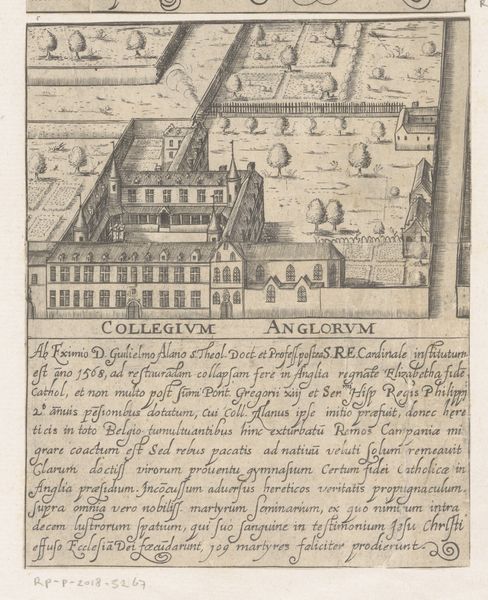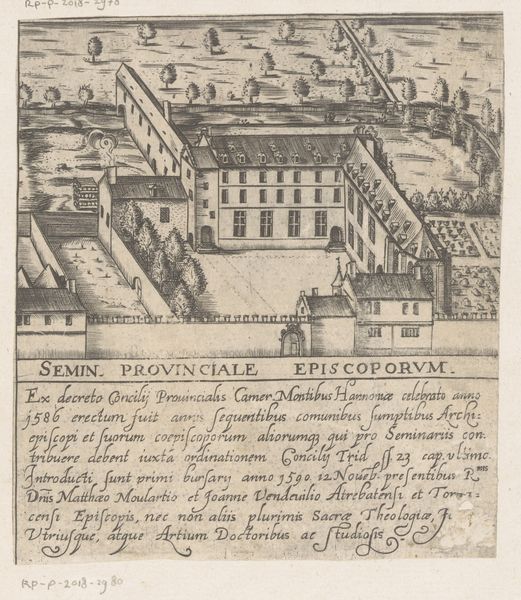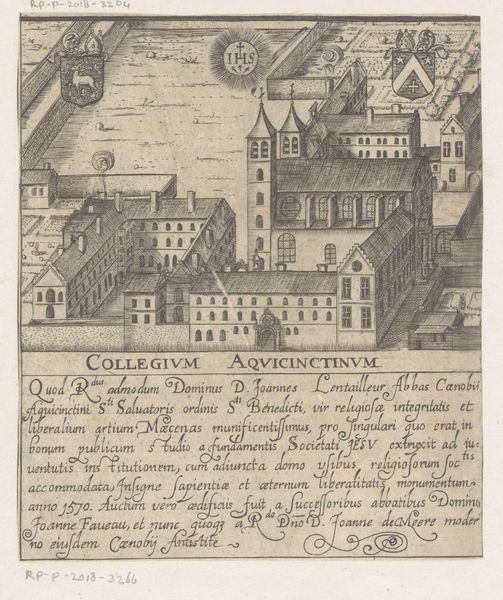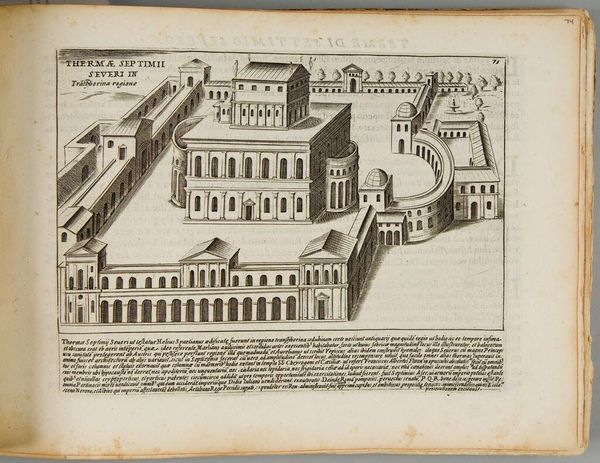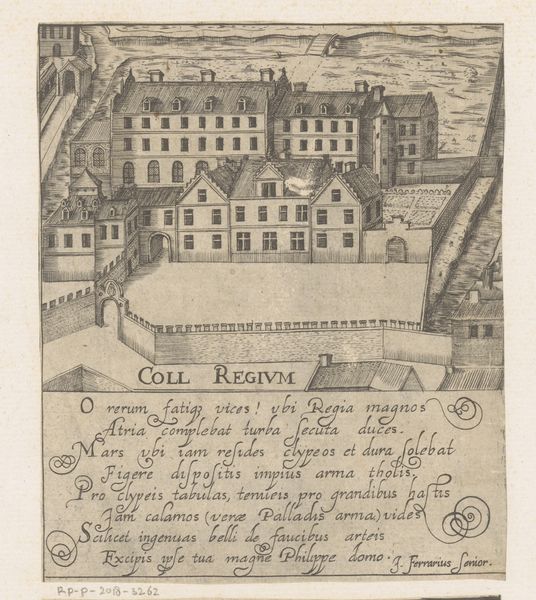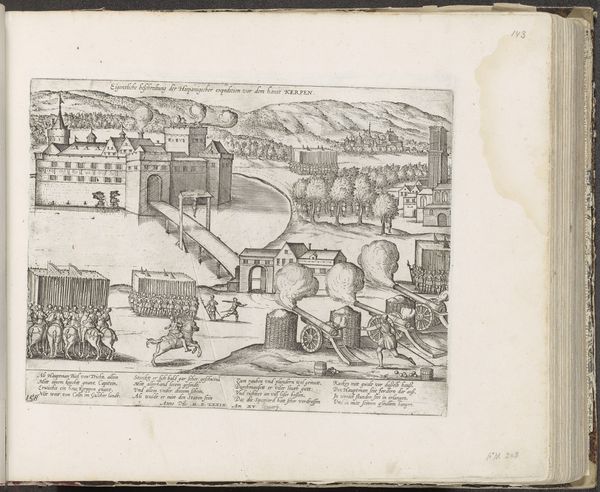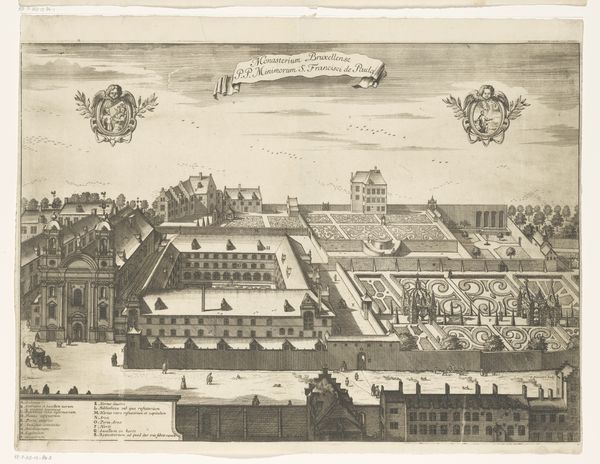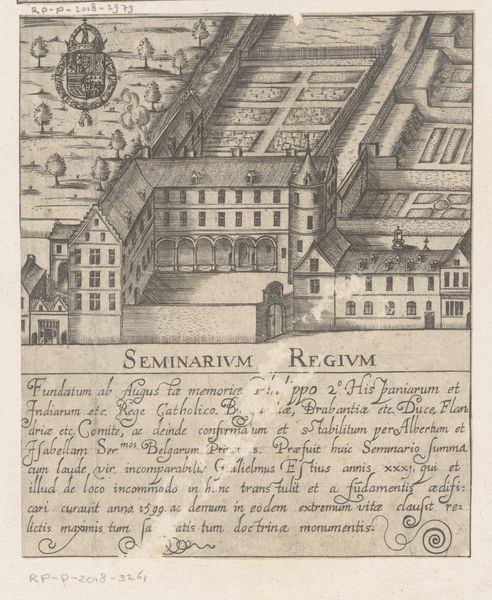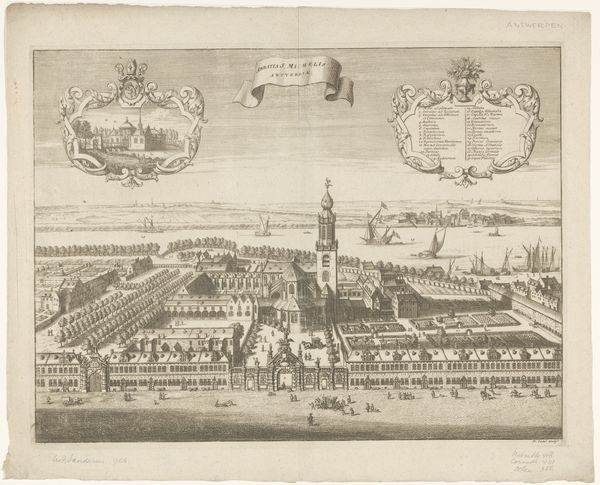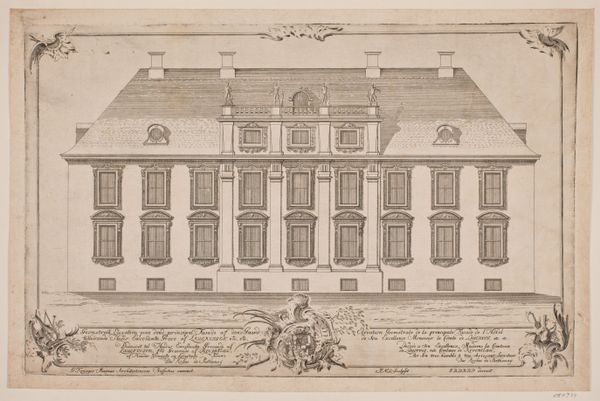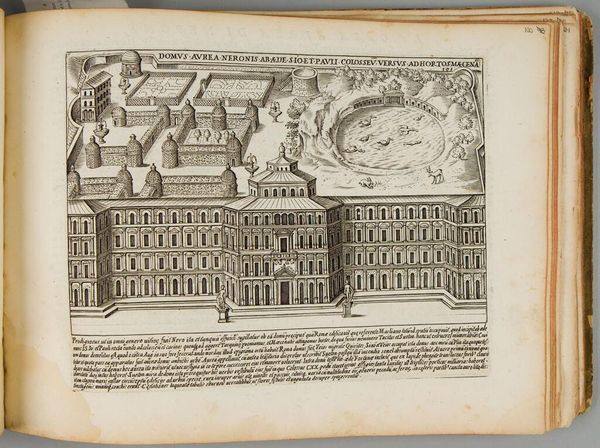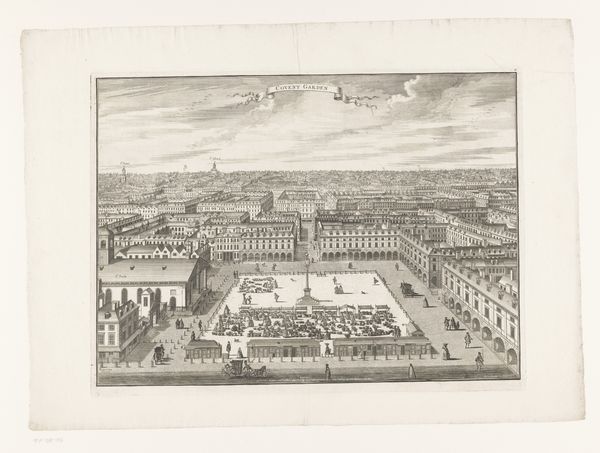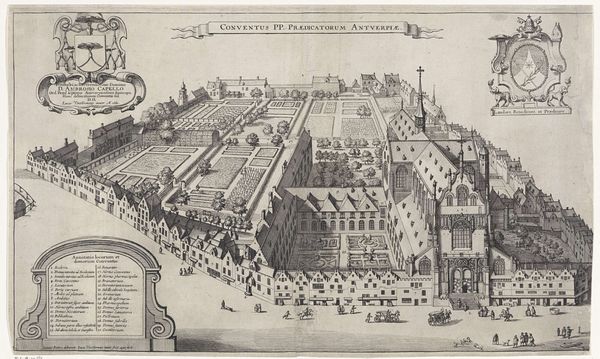
print, intaglio, engraving, architecture
#
baroque
# print
#
intaglio
#
engraving
#
architecture
Dimensions: height 144 mm, width 124 mm
Copyright: Rijks Museum: Open Domain
Curator: This intaglio print, entitled "Theologieseminarie," was crafted sometime between 1605 and 1680 by Filippo Ferrari. Editor: It's fascinating. At first glance, I’m struck by the artist's perspective. That bird’s eye view lends a formal and somewhat detached feeling, as if we’re scrutinizing the institution it depicts. Curator: Absolutely. What's especially important here is how Ferrari is capturing not just a building, but an institution, a place of power and religious formation. Its historical context is crucial: theological seminaries like this were, and are, deeply embedded within socio-political systems. Editor: You see the inscription at the bottom? I see Latin text framing it as this beacon for religious liberty for the sacred study of letters and excited 50 people and generously endowing it in the year 1606. Curator: That's it exactly. We're invited, essentially, to participate in this foundational narrative of religious propagation of liberty through the investment in students who might otherwise experience disenfranchisement. Ferrari's work here serves to broadcast power and garner patronage. Editor: The precision of the lines is impressive, considering the era. And I imagine prints like this circulated widely, disseminating these ideas. But I also see something...austere in the architecture. This calculated rationality could feel quite restrictive and, in essence, not as liberating. Curator: That tension you feel between a promise and reality is spot on. Feminist scholars would point to how historically seminaries exclude women. Moreover, consider the colonial context in which religious education served as both a means for intellectual engagement and for cultural domination. Editor: Thinking about it that way adds layers. So, the work is as much a reflection of ideals as it is of inherent social controls. Thank you for shedding light on these essential aspects, Curator. Curator: My pleasure. Seeing historical objects like these within their evolving networks helps us critically understand the complicated relationship between belief, institution, and power.
Comments
No comments
Be the first to comment and join the conversation on the ultimate creative platform.
